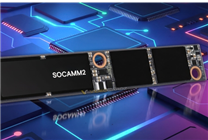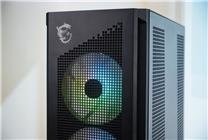Summary
- Emerging SOCAMM2 Standard: JEDEC’s new SOCAMM2 specification targets next-generation AI and data center applications, boasting impressive bandwidth and energy efficiency.
- Performance Enhancements: With a maximum data rate of 9.6Gbps, SOCAMM2 significantly outperforms existing memory technologies, fulfilling the increasing demands of modern computing.
- Widespread Industry Adoption: Major vendors like NVIDIA are already transitioning to SOCAMM2-based platforms, indicating a robust shift in memory technology standards.
The world of technology is on the brink of a significant transformation as JEDEC nears completion of its JESD328 standard specification for the SOCAMM2 memory module. This innovative form factor, known as the Small Outline Compression Attached Memory Module, aims to enhance the capabilities of future AI and data center platforms.
Key Features of SOCAMM2
The SOCAMM2 standard introduces a low-profile, replaceable, and upgradeable memory solution built upon the LPDDR5 and LPDDR5X technologies. This state-of-the-art memory structure offers several advantages:
-
Higher Bandwidth: SOCAMM2 achieves a maximum data transmission rate of 9.6Gbps—equivalent to 9600MT/s. This represents a substantial leap from the previous standard of 8533MT/s, meeting the demanding bandwidth requirements of contemporary AI training and inference tasks.
-
Lower Power Consumption: Not only does the SOCAMM2 support faster data rates, but it also emphasizes energy efficiency, reducing power consumption and heat dissipation significantly. This is crucial for maintaining operational efficiency in data-intensive applications.
- Enhanced Scalability: The design allows for seamless upgrades and replacements, making it easier for server manufacturers to adapt to future performance demands without overhauling entire systems.
Additionally, SOCAMM2 memory modules will come equipped with Serial Presence Detect (SPD) functions, which facilitate identity recognition and verification, ensuring that reliability standards are consistently met.
Industry Transition
Major technology vendors are already paving the way for SOCAMM2 integration. For instance, NVIDIA is in the process of migrating its server platforms to this advanced architecture. While the physical configurations may differ, the core functionalities and benefits remain consistent across the adoption of SOCAMM2.
JEDEC has confirmed that the official release of the JESD328 SOCAMM2 specification is imminent, marking a pivotal moment in memory technology evolution.
Historical Context
The journey toward SOCAMM2 has been marked by significant industry collaboration and innovation. The original CAMM memory technology, developed by Dell’s senior engineer Tom Schnell, was first implemented in the Dell Precision 7000 series workstations featuring DDR5 technology.
In late 2022, Dell contributed the CAMM technology to JEDEC, aspiring for it to become the unified industry standard. Following this, the smaller CAMM2 standard was established in December 2023, prompting the quick release of related products by motherboard and memory manufacturers like MSI and ASUS.
Further advancements came in September 2023 when Samsung unveiled its plans to utilize LPDDR5X memory for smaller LPCAMM products. Additionally, Micron revealed its intentions to deploy LPDDR5X memory in LPCAMM2 solutions, aiming for initial release on Lenovo’s ThinkPad P1 Gen7 by May 2024.
Looking forward, Micron and NVIDIA are collaborating on SOCAMM memory specifically designed for AI servers, integrating LPDDR5X memory with a maximum capacity of 128GB. Samsung and SK Hynix are also part of this transformative endeavor.
Conclusion
The emergence of the SOCAMM2 memory standard represents a promising frontier in the landscape of computing technology. With its potential for higher data rates, lower energy consumption, and enhanced scalability, it is poised to meet the evolving needs of AI and data center environments. As major tech entities embrace this innovation, the transition to SOCAMM2 will likely lead to significant advancements in memory performance and efficiency, setting new benchmarks for future developments in the industry.






